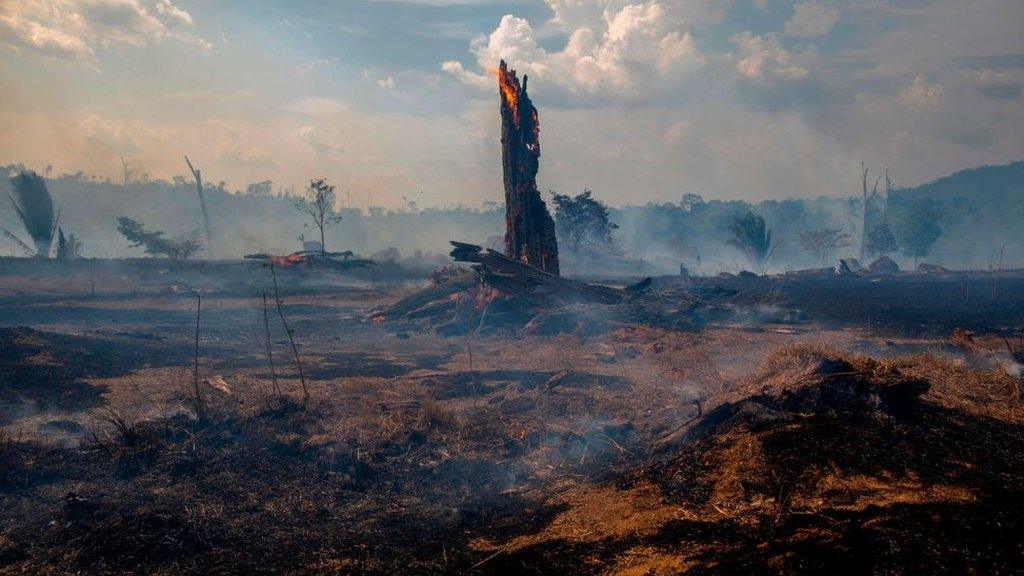Global warming: Amazon rainforest could face tipping point, scientists warn
- Published
- comments
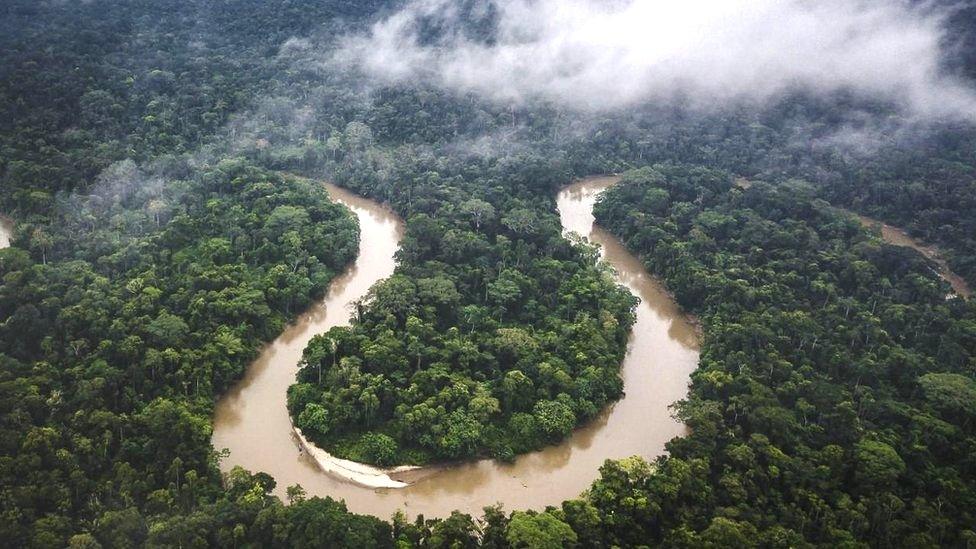
The Amazon contains between 90 and 140 billion metric tons of carbon
The Amazon rainforest could reach a "tipping point" where its trees are unable to grow back, and we could lose the rainforest entirely, scientists say.
The Amazon rainforest is in South America, covering much of north west Brazil and extends into Colombia. It's the biggest rainforest in the world.
A scientific study that used 30 years worth of data found that a large amount of the trees in the Amazon are finding it harder to recover from damage caused by droughts caused by climate change, fires and deforestation.
This is the term used when trees are cut down, usually on a large scale, to be used or sold
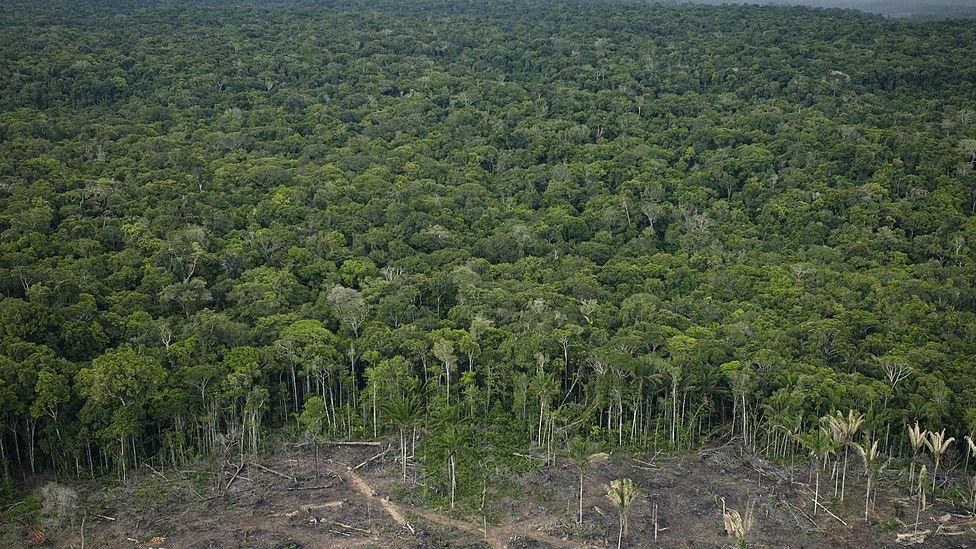
This means that when trees are lost, new ones may not be able to grow back quickly enough in order to keep the rainforest intact. This is what experts are calling a "tipping point".
Dr Chris Boulton of the University of Exeter said: "The trees are losing health and could be approaching a tipping point - basically, a mass loss of trees."
If this happens, it could be really damaging to the environment.
The impact of climate change
Despite climate change, average amounts of rainfall in the Amazon has not changed a lot in recent decades.
However, dry seasons have become longer, droughts have become more common and more severe and the trees are struggling to cope.
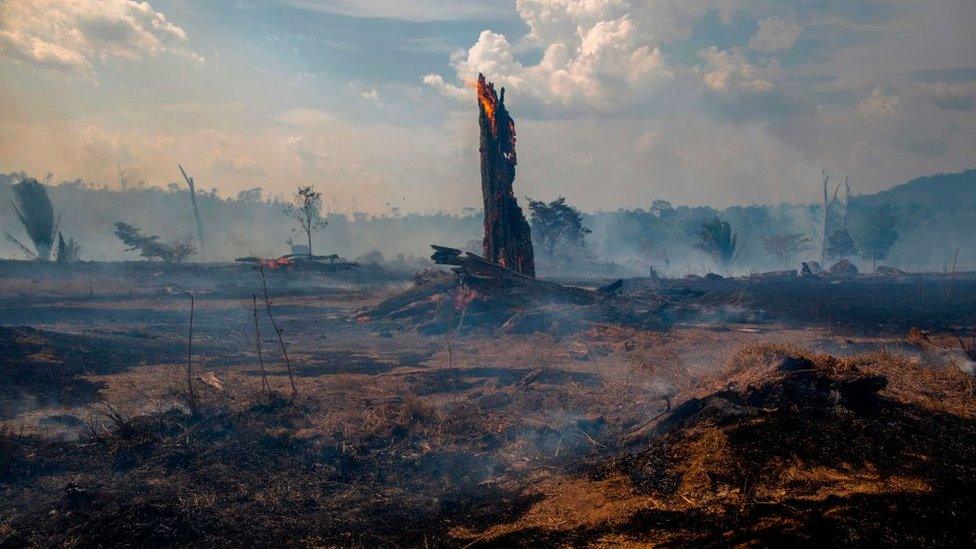
Why does this matter?
The Amazon is crucial in the fight against climate change.
The world's largest rainforest, the Amazon sucks up and locks away carbon dioxide (CO2) - a greenhouse gas - that is released into the atmosphere when people use energy, or travel in cars and planes.
Greenhouse gases contribute to global warming.
But scientists are saying that the rainforest could become something more like a savannah - which is a big grassy area with not that many trees - which isn't as good at trapping CO2.
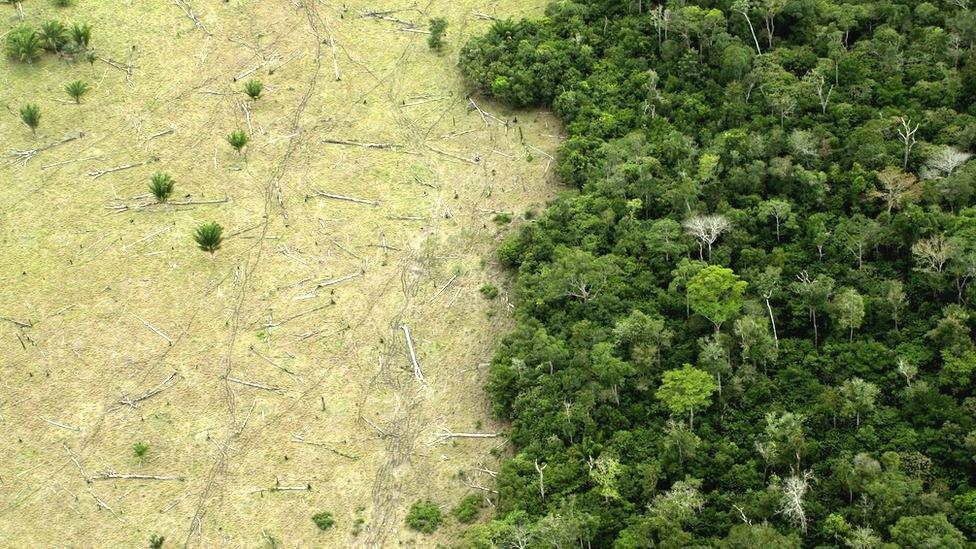
The more trees cut down, the less the forest can soak up emissions
Not only would there be fewer trees to catch CO2 produced by humans, but carbon that's currently stored in the trees would be released into the atmosphere.
"The Amazon stores lots of carbon and all of that would be released into the atmosphere, which would then further contribute to increasing temperatures," Dr Boulton said.
Meet Txai - the environment activist from Brazil
Animals that rely on the Amazon to survive would also be affected, as they'd lose their habitats - which is where they live and sources of food.
Commenting on the research, Dr Bonnie Waring a climate change and environment expert at Imperial College London, said: "Climate change and human exploitation of tropical forests are endangering the world's largest rainforest, which is home to one out of every 10 species known to science."
WATCH: In 2019 wildfires burn in the Amazon rainforest
What can be done about this?
Scientists think that the Amazon hasn't reached the "tipping point" yet, and there are things we can do to make sure we never get there. "So there's hope," according to Professor Niklas Boers, who worked on the study.
They think that if we cut back on deforestation, there's a chance we can prevent it from reaching a point where the forest will never recover.
- Published5 May 2021
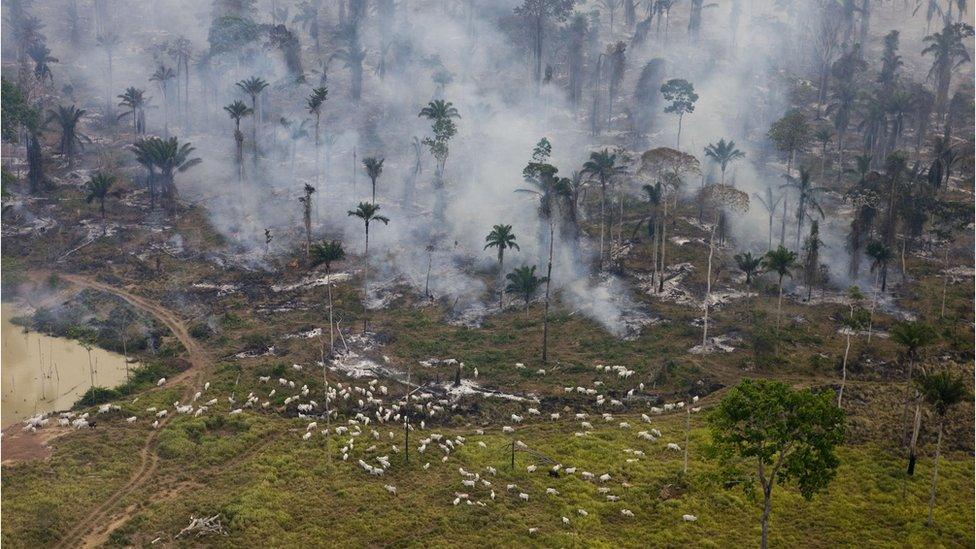
- Published14 January 2021
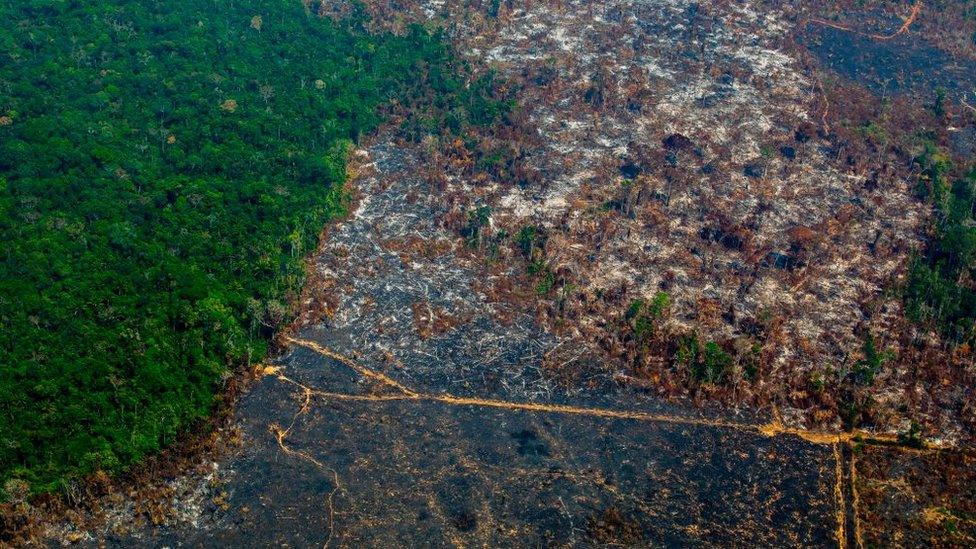
- Published31 August 2019
